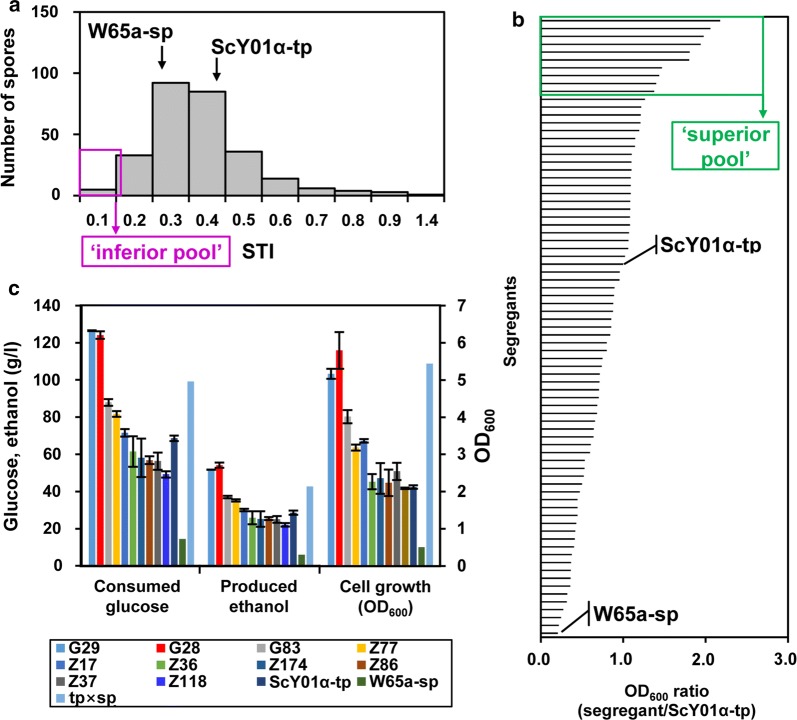Fig. 3.
Selection of superior, inferior and random pools for genome sequencing by evaluating thermotolerance capacities of segregants. a The distribution of the STI values in 277 haploid segregants from the hybrid of the two parent haploid strains ScY01α-tp and W65a-sp. Seventy-seven segregants showing higher STI values (> 0.38) than the superior parent ScY01α-tp were selected as superior segregants. Forty-nine segregants showing lower STI values (< 0.22) than the inferior parent W65a-sp were selected as inferior segregants. Ten segregants showing the ten lowest STI values (0.09 to 0.11) were selected as the most thermosensitive segregants and assembled in the inferior pool. Cell growth experiments were carried out in triplicates for each strain in 96-well plates with 1 ml YPD medium at 42 °C and 30 °C. b Cell growth comparison of the 77 segregants and W65a-sp with ScY01α-tp at 42 °C. Thirty-one segregants showed higher cell growth than ScY01α-tp at 42 °C. Ten segregants showing the ten highest OD600 ratios (1.37 to 2.17) than ScY01α-tp were selected as the most thermosensitive segregants and assembled in the superior pool. c Fermentation capacities of ten segregants in the superior pool at 42 °C. Fermentation experiments were conducted in 100 ml Erlenmeyer flasks containing 50 ml YP medium with 200 g/l glucose at 42 °C. Consumed glucose, produced ethanol and cell growth were measured after incubation for 36 h. Data represent the mean and standard error of duplicate cultures at each condition. Excluding the segregants in superior and inferior pools, ten of the rest segregants were selected and assembled in the random pool

